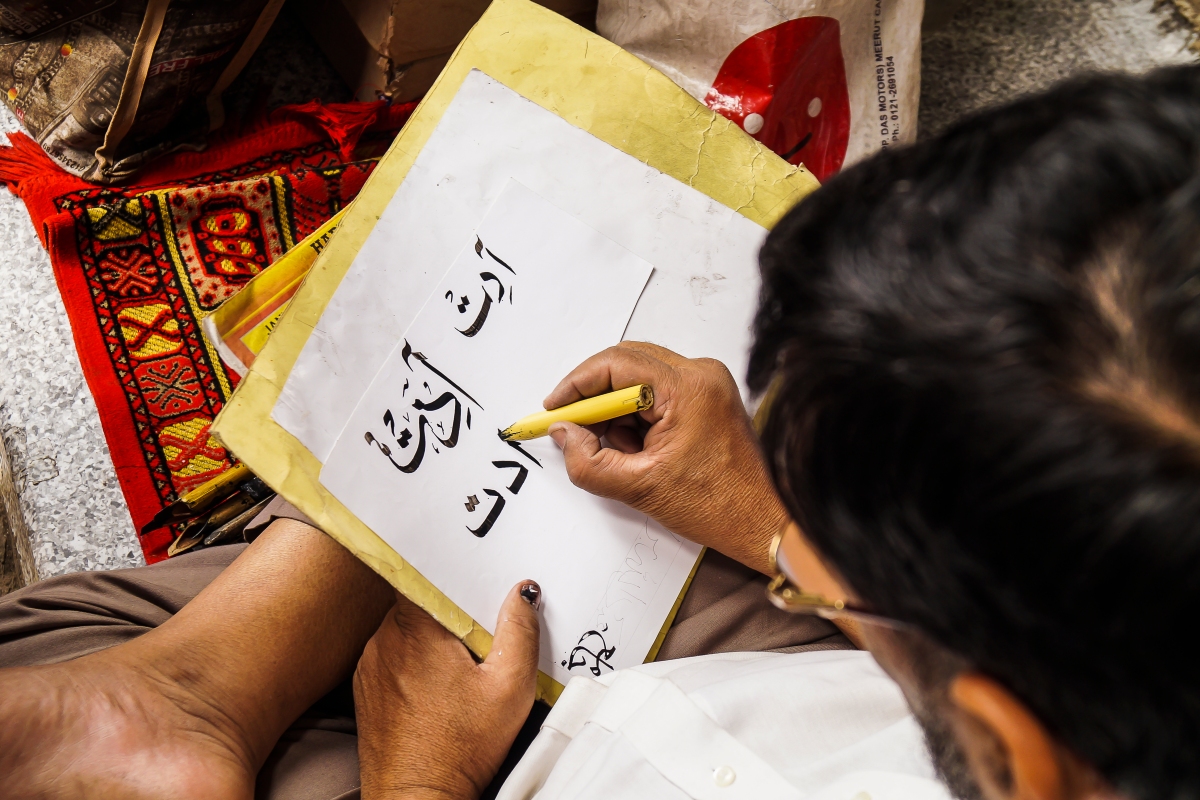Ghalib’s hand moves rhythmically across the paper, swift, confident and in a motion of his own wavelength. Sitting just across the street from Jama masjid on the edge of the plinth of an urdu bookstore, you will hardly see him even blink his eyes while he’s working, the cacophony of Chandi Chowk does little to break his focus. So when he finally sees you, you will be greeted with a stern look and a question on his face “What do you want?”
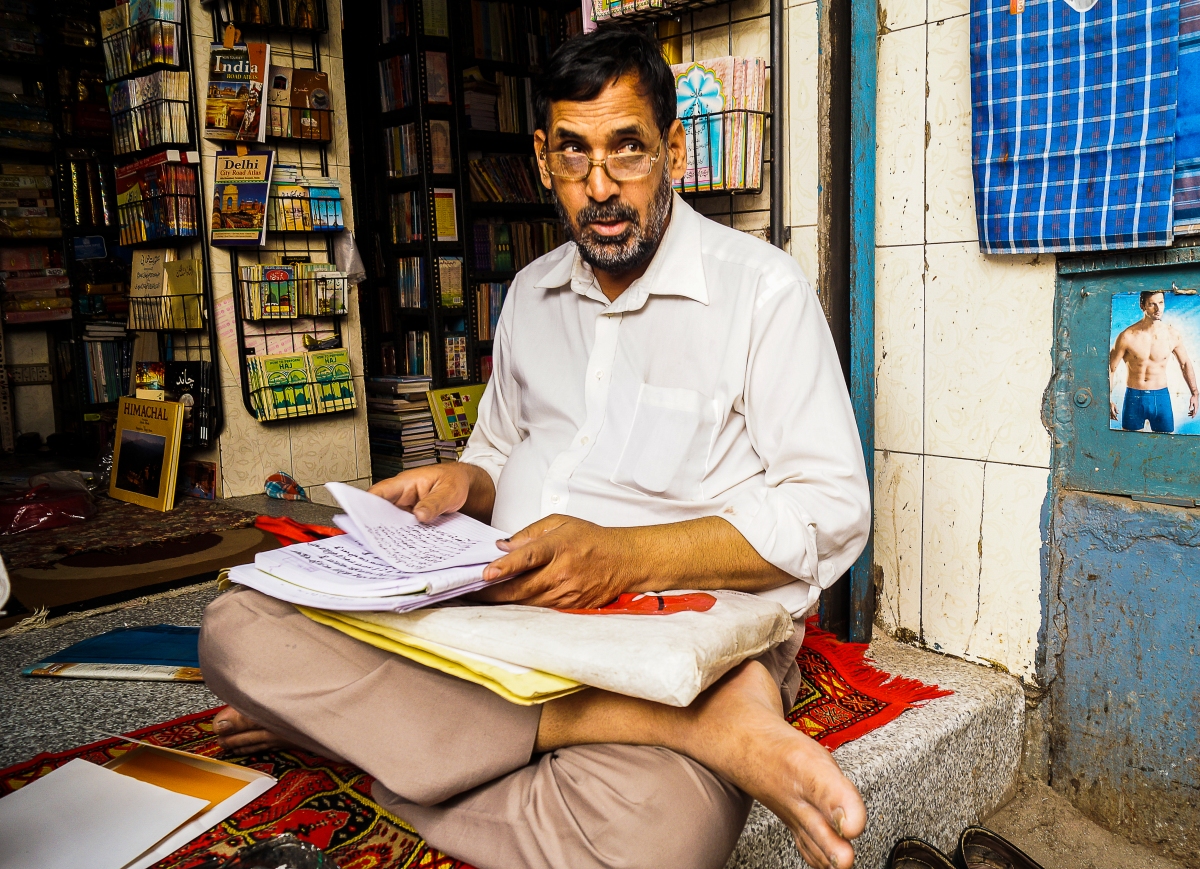
However, it is quite interesting to notice the change in his tone once he sees that you are interested in his art and it is not one of those gradual changes it is quite sudden and exclamatory. He starts talking yet his right hand keeps on moving and often I find him being constantly seduced away by his work, so in short there were a lot of intervals and yawning gaps, however, here’s what I have gathered.
So Mohammad Ghalib, the gentlemen I met is one of the few Katib writers left in India. According to him there are only three more Katib writers left in Delhi. Elaborating about Katib, he says that a lot of people misinterpret it as a style of writing or calligraphy rather originally the word was derived from the Arabic word Kitab meaning a book and a Katib was basically a person who used to be the keeper of the books or held the position of a writer or a secretary.
He puts pressure on the fact that in those days only a few got the position of a Katib as it required nerve churning patience, proper understanding of the language, its intricacies and also a fine sense of aesthetics.
Some of the major Urdu books were written by katibs between the 6th and 15th century all across the Middle East. Imagine thousand-paged books all handwritten, that was the kind of prowess and perseverance the Katibs of yesteryears had. He went as far as to say that the Katib style of writing added more to the word than there already was, some sort of subtle and surreal meaning in its own right.
The Katibs would write finances for the kings, documented incidents, memoirs in short they were the chroniclers; they were solely responsible for storing everything in written form.
However, now the few Katibs that remain have reduced to making contact cards, writing love letters and creating handmade copies of archaic Urdu books. He doesn’t mind doing those. According to him, as long as he gets to do his work he will do anything.
The thing that I need to point out here is the fact that the form in which he writes is centuries old, his artistry is highly precise and experienced. It has been passed on in his family for Generations after generations. Ghalib not only holds a very rare ability rather also a responsibility of keeping it alive.
So right here he stopped and I started looking for textures. I was sure something was in store, everything, from the form to the function had an historic significance.
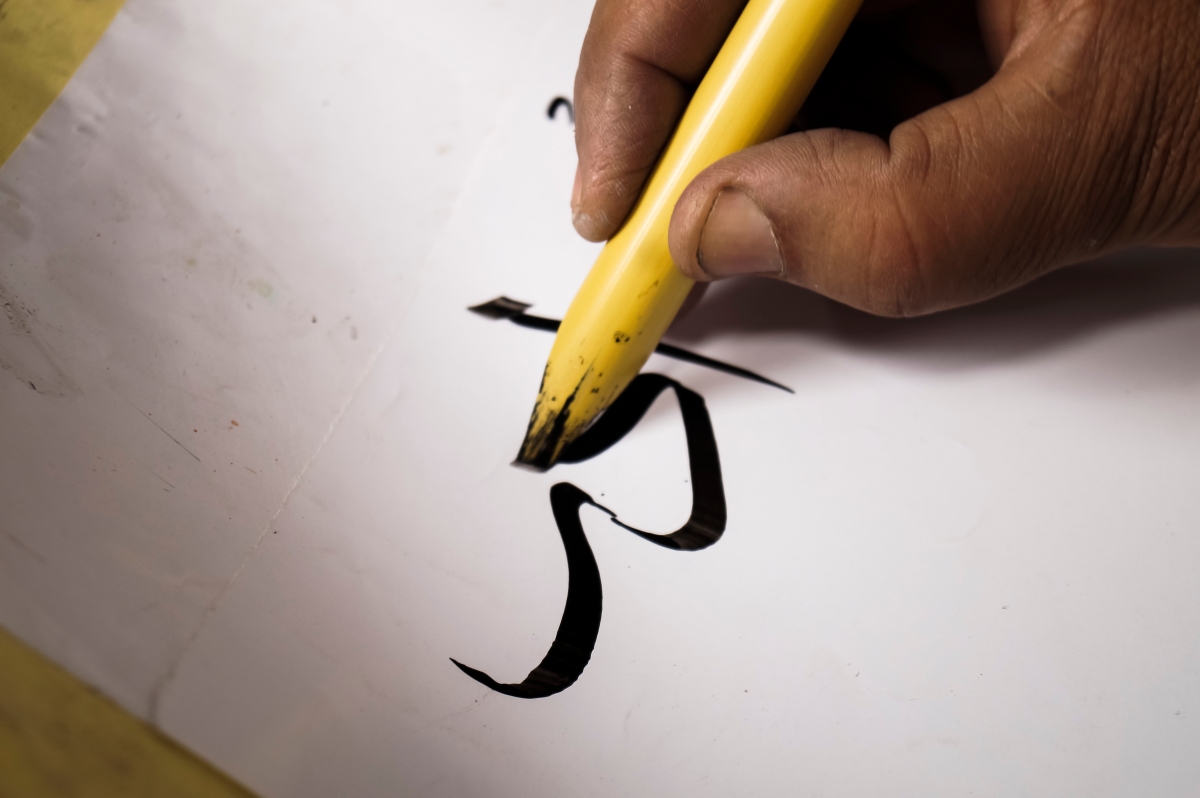
Yes we have come really far technologically and this Katib style of writing can now be downloaded as a font on your mac or windows however Ghalib uses a traditional set of handcrafted bamboo pens. And it is this facet of his ability that gives his work credibility and ingenuity.
These pens are basically your usual pen-size hollow bamboo chamfered from one end. Along with them you have ink and silk for erasing.
His pens and stationeries were at least 50 years old and this is where I found all his history stored and memories retained, on his bamboo pens. Thousands of words have come out of those pens, a thousand thoughts were given shape to by Ghalib’s pen and all those thoughts, happy, sad and everything in between were stored inside them and the only remaining tangible memory is in those textures.
If you get to meet him one day you will know that the pens are almost an extension of his body.
The textures I found:
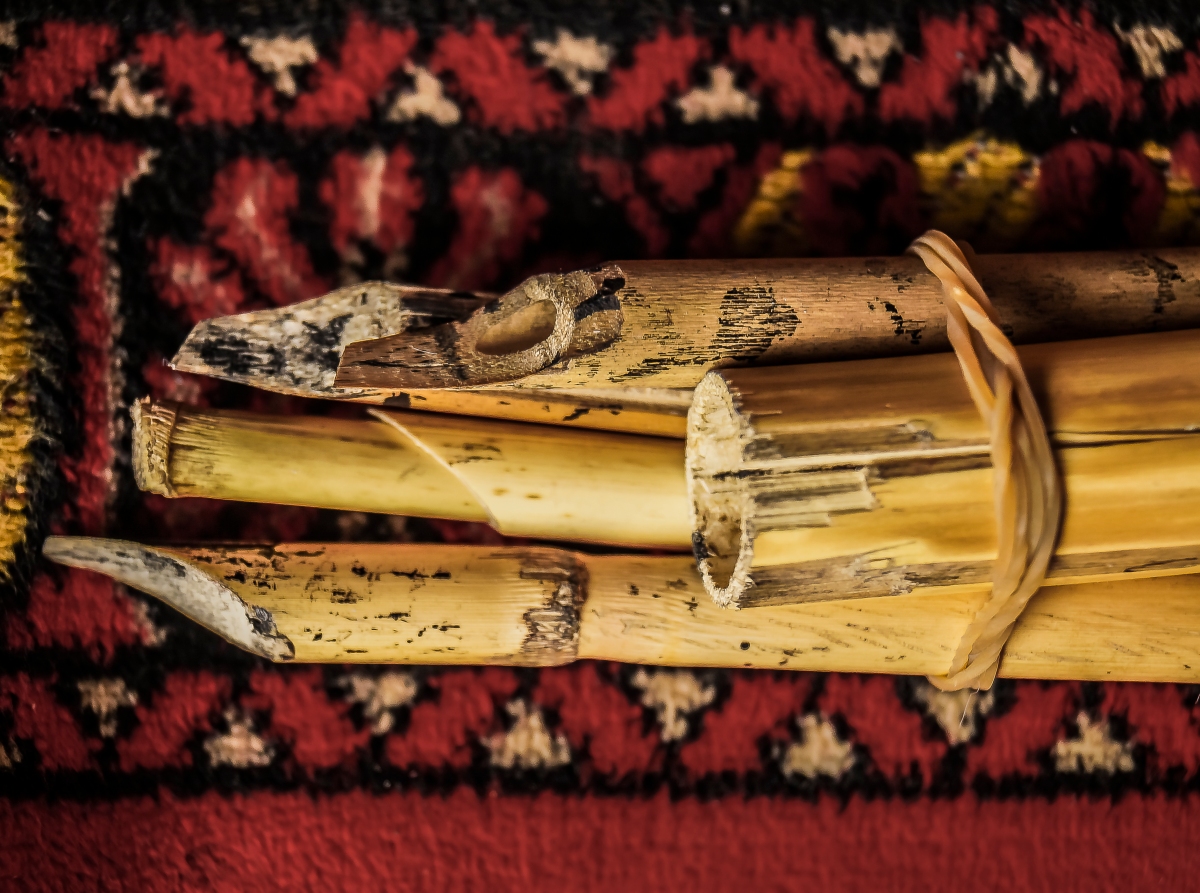
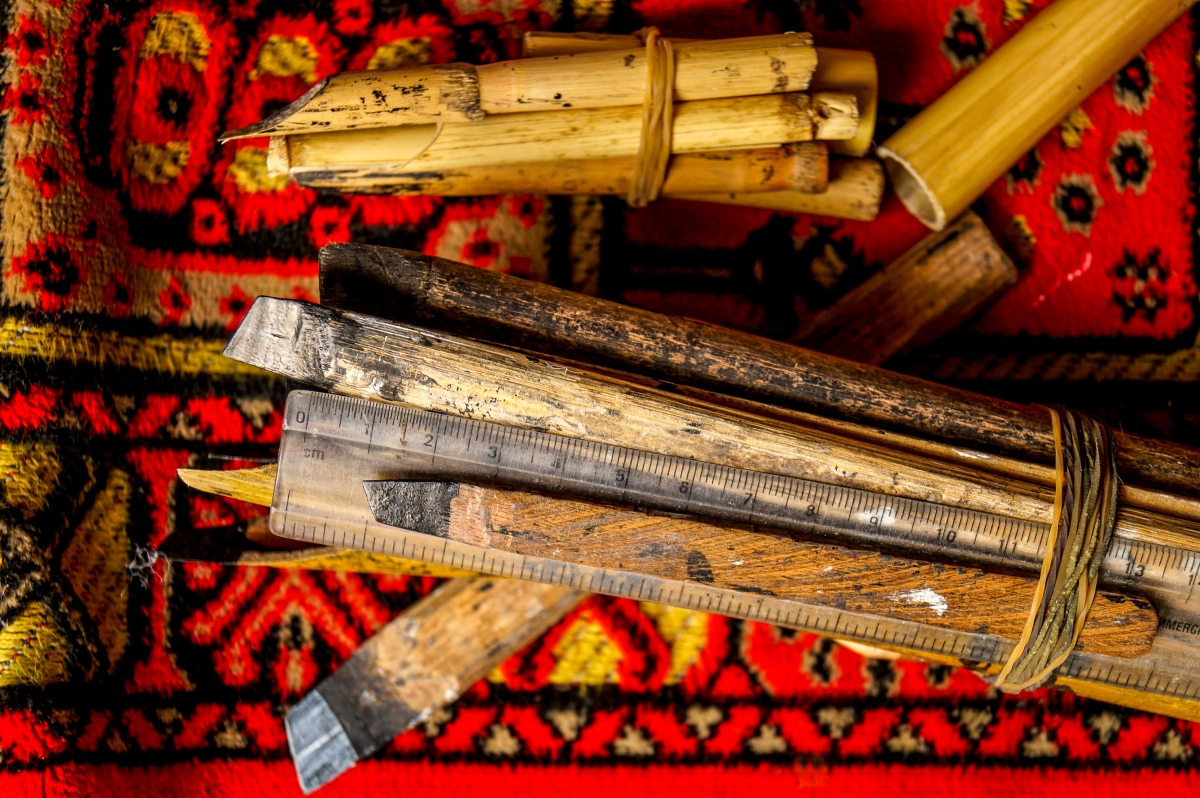
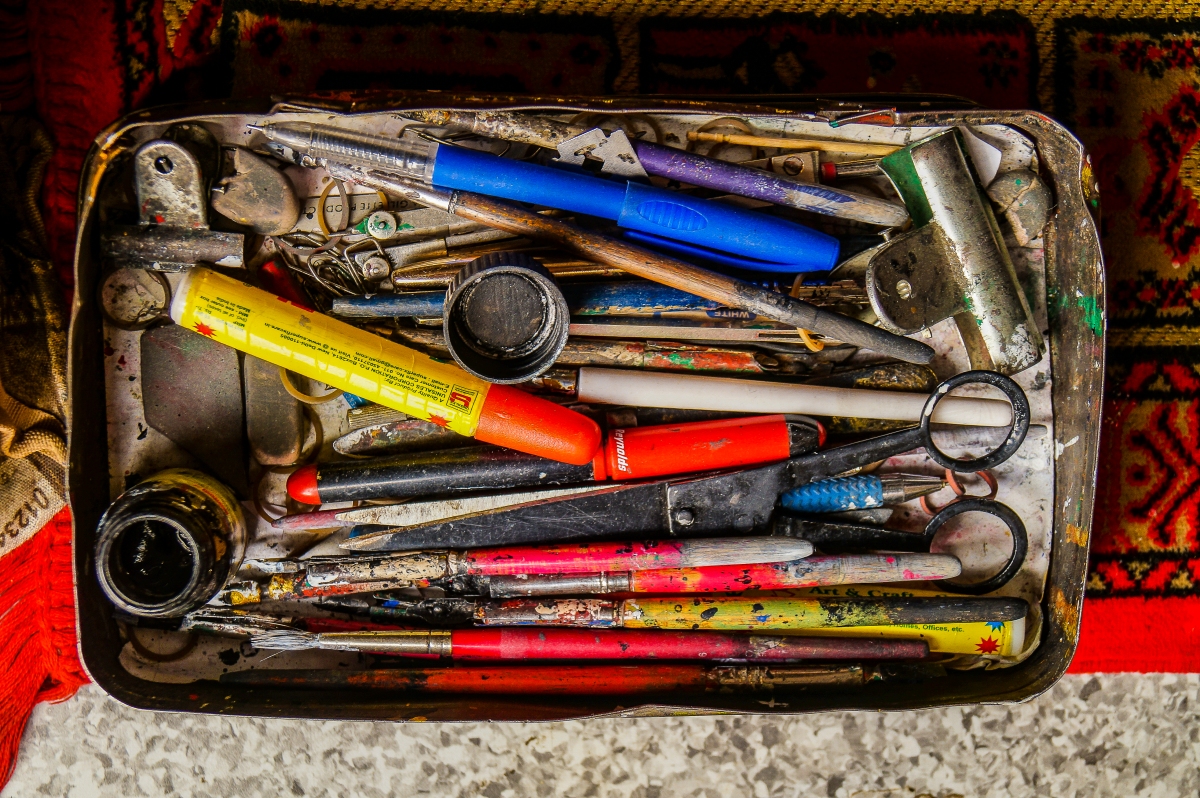
If you’re interested in learning calligraphy or want to know more about the Katib calligraphy, do visit:
http://www.arabiccalligraphysupplies.com
AADIT BASU
Picture credits : AADIT BASU
aaditbasu@gmail.com
